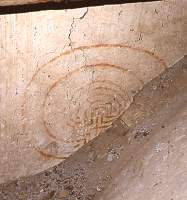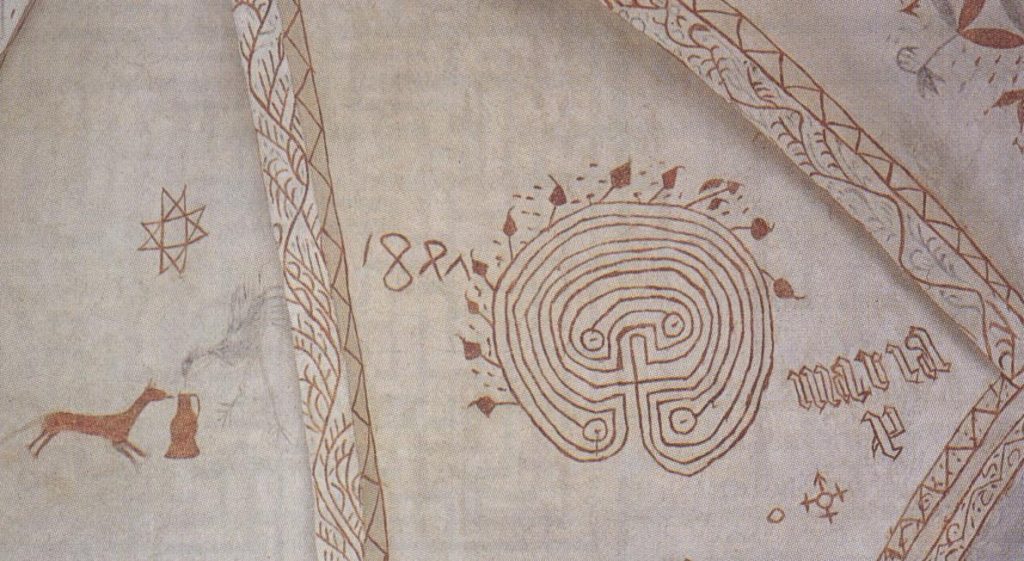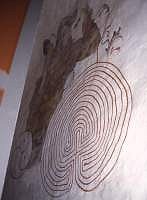Labyrinths in Danish Churches (Frescos)
Labyrinths in Danish Churches (Frescos)
It is not only French cathedrals that have labyrinths. A number of Danish churches also have, or had, labyrinths painted as frescos.
In four Danish village churches we can, to this very day, see the Trojaborg type of labyrinth painted as frescos in the 15th century. In in six other churches, they have been recorded and then covered over.


In Gevninge church near Roskilde, there are two labyrinths, about 50 cm in diameter, painted on the wall the chancel arch. They are visible above the vaults that partly cover the labyrinths.
On one of the vaults in Hesselager church in East Funen, there is a labyrinth measuring about 40 cm in diameter.


In Skive old church, there is a labyrinth painted on the west wall, about 125 cm in diameter, half hidden behind the organ.
The most beautiful labyrinth is probably the one in Roerslev church, east of Middelfart. The labyrinth, unusually painted in two colours, is found above the rood arch and measures 125 x 110 cm.
Of the seven labyrinths that have been covered over (and are thus not visible), six of them are in Jutland and one in Funen.
The six examples, situated in Central and East Jutland, are in the churches at Bryrup, Gylling, Nim, Skørring (2) and Taaning. The one in Funen is in Vissenbjerg church.
That old ”heathen” labyrinths found their way into the Christian churches at all during the Middle Ages, was due to the fact that the characters of the Greek legends were replaced by Christian symbolism. The labyrinth became a symbol of the way to God. The Minotaur was the devil, and Jesus succeeded Theseus as the hero who found the way. Maybe it is the words of St. John: ”I am the way, the truth and the life” (14. chap. 6) that the labyrinths in many Nordic frescos refer to.
The photos from the churches in Denmark are by Jeff Saward, Labyrinthos, www.labyrinthos.net.

















